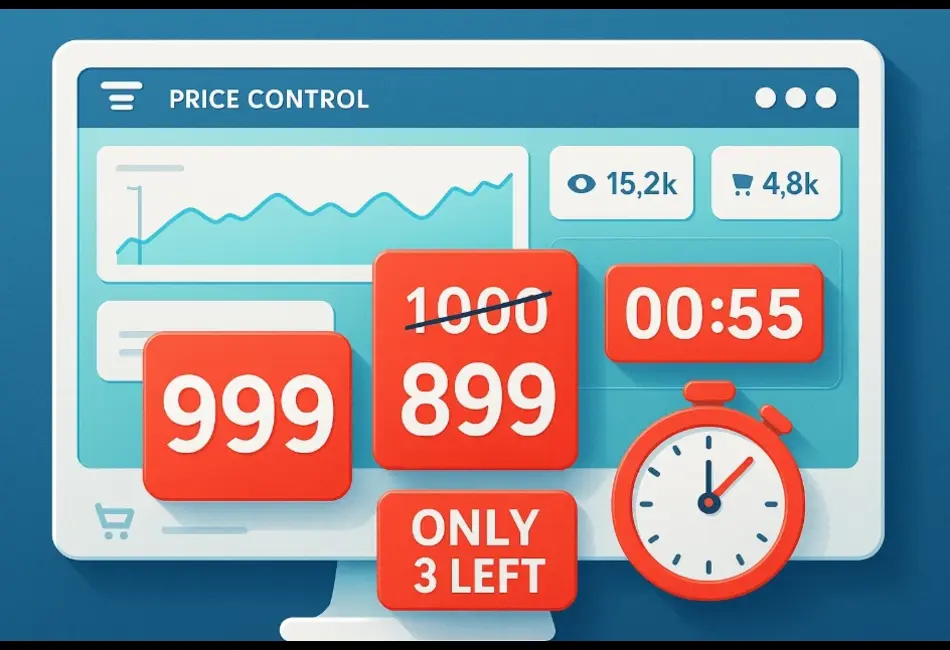Introduction: Why Psychology Matters in Pricing
Pricing is not only about mathematics. It’s also about psychology. In e-commerce, the purchase decision is often made in just a few seconds, and the way a price is presented can tip the scales in your favor. The psychology of pricing helps to understand which techniques influence the perception of value and how to use them to increase sales.
Technique 1. The Magic of Nines: 999 Always Looks Better Than 1000
We all know this trick: the price “999 UAH” looks much cheaper than “1000 UAH.” The difference is only 1 hryvnia, but the brain perceives it as a whole step down. This is a classic example of psychological pricing that works in almost every product category.
Technique 2. The Anchoring Effect: When the First Price Sets the Tone
If a customer first sees a higher price and then a reduced one, the brain automatically compares it to the initial figure. Even if the final price isn’t exactly cheap, it feels like a bargain. That’s why “was/now” price tags work so well.
Technique 3. The Contrast Between Old and New Price
A crossed-out price next to a new one is a powerful motivator. The customer feels that they are getting an immediate discount. This technique is especially effective on marketplaces and product cards.
Technique 4. Limited Offers and the Sense of Scarcity
Phrases like “only 3 items left” or a countdown timer trigger urgency. This taps into instinct: the fear of missing out pushes the customer to decide faster.
Technique 5. Visual Design of Prices
Font size, color, and placement all influence perception. Red price tags are associated with discounts, while large numbers are subconsciously seen as “more important.” In e-commerce, such small details can boost conversion by tens of percent.
Technique 6. Bundles and Packages as a Sales Tool
If a product is offered in a bundle at a “special price,” customers often choose that option—even if they don’t need all the items. This works thanks to the effect of “added value.”
Technique 7. Supporting Prices With Brand Value
Psychological pricing isn’t only about numbers—it’s also about brand perception. Customers are more willing to pay more if they trust the company. Reputation, service, and support all become part of the pricing strategy.
How Price Control Helps
All these techniques are only effective when backed by reliable data. That’s where the Price Control platform comes in. It allows you to:
- monitor competitors’ prices in real time;
- track promotions and discounts;
- adjust your pricing strategy instantly;
- build smart mechanisms for dynamic pricing.
In other words: psychology + data = a strong competitive advantage.
Conclusion
Psychological pricing is a powerful tool in the e-commerce arsenal. From the magic of nines to the fear of scarcity, these techniques help retain customers and boost conversion. But to work at maximum efficiency, they must be supported by analytics.
That’s where Price Control becomes your partner: combining psychology with accurate data to help your brand sell more and sell smarter.
